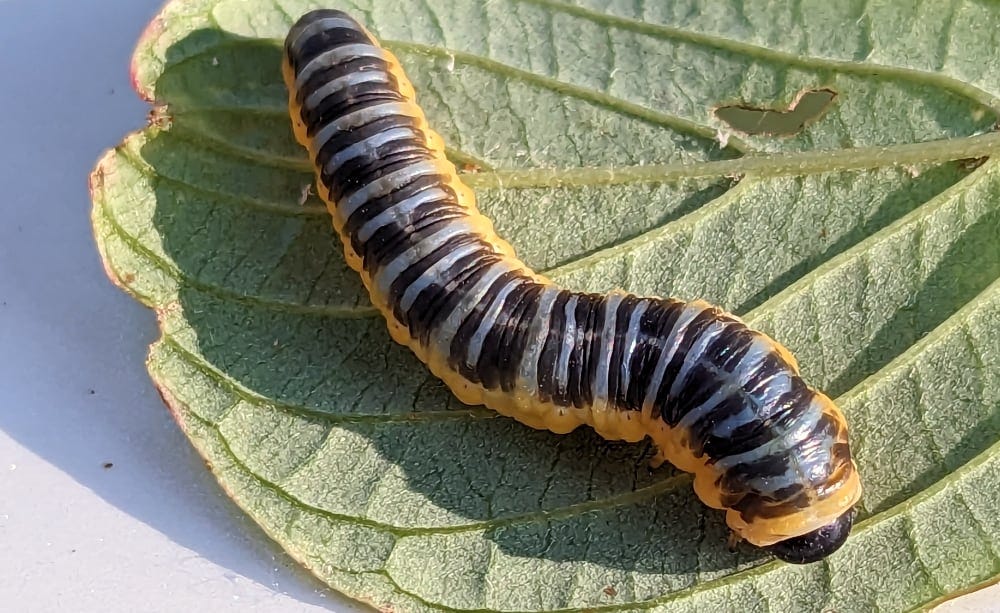22 Sept
Botheration …
I didn’t expect to be publishing a newsletter this week, or for the next three while we visited hard to access wildlife locations and distant small islands with no internet in the Gulf of St-Lawrence . Quite out off the blue on Friday we were told that the trip has been cancelled because one of the sailing schooner’s engines needs a major overhaul which has to be done in a dry-dock in Croatia. Stuff happens, but … there is some despondency around here today. Even my fun graphic that was to appear (see below) has had to be edited … C’est la vie.
So, back to routine …
It has been gently suggested to me that I might be a little less didactic and scientific in some of my writing and that I could lighten things up by including occasional personal anecdotes and ideas, just to prove that I am a real, fuzzy human being with whom readers can connect, and not a robot in a white coat. Make it human they say.
Deep breath - I will try 😉
“Cool of the Day”
Something calming is called for. As we all worry about the future of the natural world, and knowing that more than a few of you are wildlife gardeners, I want to offer this small gift. I first came across the song which originated in the early 50s in Appalachia when we were touring New England in the late 1980s with a group of Morris Dancers from (Old) England and met the Bayley-Hazen Singers near Montpelier in Vermont. Beautiful harmony singing and a powerful message that is entirely relevant to the theme of this newsletter. Enjoy it.
https://genius.com/Daniel-martin-moore-in-the-cool-of-the-day-lyrics
Meanwhile, albeit at rather short notice, I bring encounters with a seasonal insect, a bird, a plant. All local, all close to home … which is rather the point of this.
An Insect - Dogwood Sawfly
Dogwood sawflies, Macremphytus tarsatus, are slender, shiny, black, wasp-like insects. Dogwood sawflies emerge from May to July. Females insert up to 100 eggs in a leaf using a “saw-like” ovipositor. Each egg causes a small bump that eventually turns brown. Immature dogwood sawflies are caterpillars that change colors, textures, and appearances several times during their development. The second larval stage is covered in a white waxy covering and the last larval instar is yellow and black. Young caterpillars skeletonize leaves. Older caterpillars eat everything but the midrib. They eventually become pale cream color with black spots and grow to about an inch long at which time they are yellow and black. Mature caterpillars bore into decaying or soft wood and form cells in logs, landscape timbers, and even lawn furniture. We have one generation per year in North Carolina.
A Bird - Swarming Vultures
A year ago this week a tree at the bottom of our suburban garden was selected as a gather place by a group of migrating Turkey Vultures. As far as I can tell, I don’t seem to have shared this unusual seasonal occurrence and anyway, there are now many more readers subscribing to they newsletter than I had back then … so, Vulture Redux. This year they are circling above and tipping their wings towards the south while the perching tree that had died from Emerald Ash Borer is no more.
A Plant - Broad-leaved Goldenrod (Solidago flexicaulis)
Really, just to demonstrate that not all of the 126 or whatever it is species Solidago are tall and floppy. This one is discrete and rather nice.
Now, this is fun.
A tale of a small raptor, a scared Sparrow and a guy with a decent lens and the words to tell the story:
… I will include a short review of the book that is taken from in next week’s (unanticipated) edition.
… and finally, from the wild garden, another gift assembled by J. It might be almost October but there is plenty of colour, with many bees, outside :














Regarding
"It has been gently suggested to me that I might be a little less didactic and scientific in some of my writing and that I could lighten things up by including occasional personal anecdotes and ideas, just to prove that I am a real, fuzzy human being with whom readers can connect, and not a robot in a white coat. Make it human they say."
I come to Substack for substantial writing by people who know what they're talking about. To those who say "lighten it up with personal anecdotes", there are billions of those pubs on Substack and elsewhere. Please leave the unapologetic experts to do their thing.
Carry on Richard! 👏👏